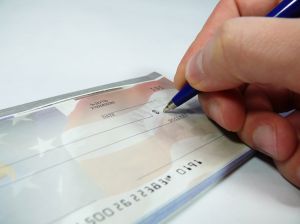Recording Owner's Loan to Company
by Debra
(Ontario, Canada)

How to record a long-term shareholder loan
If the Owner makes a loan to the company and it will not be paid back within the year, I know this is a Long Term Liability, but I do not know what to call the account. Also what would be the entry?

Hi Debra,
I would call the account Shareholder Loan - Long Term. This will differentiate it from the Shareholder Loan account that is normally classified in current liabilities.
Just a note ... if you classify the loan as long-term, make sure any personal expenses are not withdrawn from here ... that is why shareholder loans are normally classified as a current liability account ... because shareholder's tend to make multiple withdrawals (and possibly deposits) over the year for personal expenses.
I prefer to setup a credit card type account in QuickBooks called ""Owed to Owner" (or you could substitute their actual name). I have the owner submit expense reports with receipts attached to get reimbursed for business expenses made with personal funds. If the owner-manager made cash withdrawals, I would also enter them to this account or if s/he make personal purchases with corporate funds.
The owner will have to keep a very close eye on both accounts (if you setup the shareholder loan as long term) to ensure s/he stays in a credit balance. Once the combined accounts move to a debit position, the rules of the game change. If you want to keep the books simple and follow the KISS philosophy, set up the account as a current liability account only.
Your journal entry to setup your long term shareholder loan would be:
DEBIT Cash in Bank (or wherever the funds were deposited ... usually a current asset account on your balance sheet)
CREDIT Shareholder's Loan - Long Term (a long term liability on your balance sheet)
If you go this route, consider ensuring the current liability "Owed to Owner" account is paid back (i.e. the balance is zero) before fiscal year-end each year.
Comments for Recording Owner's Loan to Company
|
||
|
||
|
||
|
||
|
||
|
||
|
||
|
||
|
||
|
||
|
||
|
||
|
||